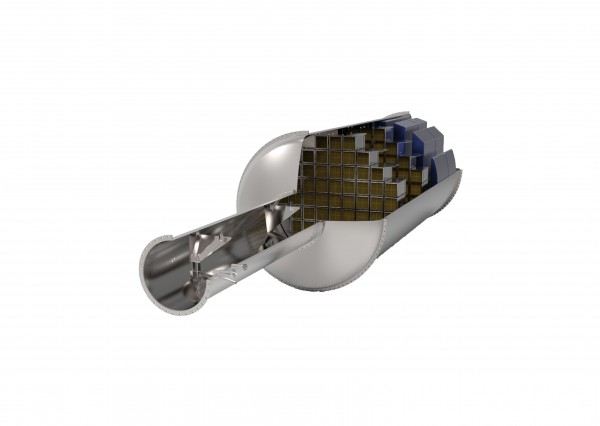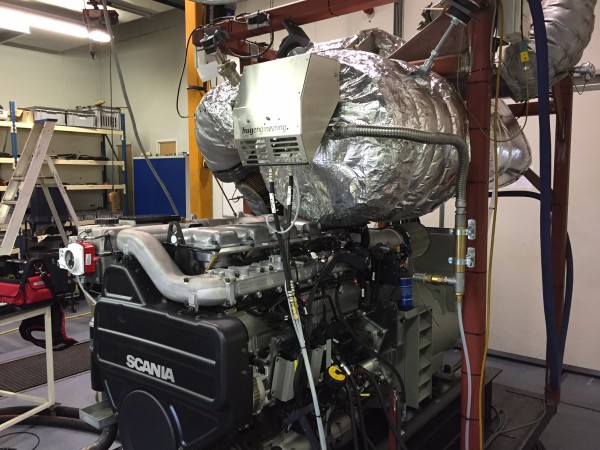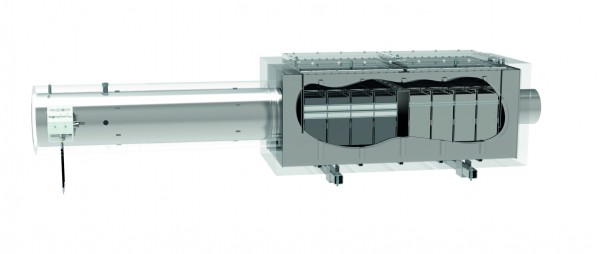Embracing Tier III with a Hug
Hug Engineering and Nießing Anlagenbau's collaboration to develop combined after-treatment and silencer exhaust systems highlights issues surrounding Tier III implementation for yachts and the implications on design…
Swiss exhaust treatment specialist Hug Engineering has announced an agreement with German silencer and exhaust air systems manufacturer Nießing Anlagenbau which will see the two companies cooperating to design and deliver combined muffler/SCR (selective catalytic reduction) and muffler/DPF (diesel particulate filter) systems for a variety of static and mobile applications, including superyachts. The agreement comes at a pertinent moment in engine and generator exhaust system development as the full bite of the IMO’s Tier III NOx emissions regulations – which came into force for vessels over 500GT at the start of 2016 – begins to make its presence felt in the superyacht industry.
The collaboration between Hug and Nießing will allow for the development of highly integrated, combination end-to-end exhaust systems with integrated mufflers. “Nießing was an active supplier of some of the same customers we have,” Timo Bednarek, Hug’s Head of Product Unit Mobile, tells superyachtnews.com, “but the cooperation actually started as a German government-funded project together with yacht builder Lürssen to look for a smart solution for a combination of SCR and silencing functions.”
While it sounds straightforward, the art of creating a successful exhaust system with integrated gas treatment and silencing is quite challenging. “The setting of both SCR and silencing functions has to be optimised so as not to affect each function,” explains Bednarek. “The mixing of the DEF urea solution for the SCR has to work properly so it doesn’t get affected by any silencer components, and the SCR and silencer modules have to work together to bring the sound level down. That is not just a case of looking at the general sound level but looking at every sound frequency, and this is where the experience of Nießing comes in. The concept is easy, but to design a system which is specifically optimised for a real engine – taking care on the ignition frequency, which is the most disturbing frequency you hear on board – and then combining that with a very smart solution in steel is the clever part.”
It all hails to a new superyacht landscape where Tier III NOx limits – even though they are currently only enforced in US and Caribbean Emission Control Areas – mean new-build yachts need to consider the implications on engine room design of adding treatment systems. It is something that Hug already has experience with, having been actively involved in the development of the system for the generators and main engines on the AMELS 188 which passed Tier III certification tests earlier in 2016. “We started on that project in 2014,” says Bednarek, “but it was in 2015 that it became concrete when we worked on the design, manufactured the exhaust system and gave our input for the certification process.”
Bednarek highlights the issues facing the industry with Tier III, saying that in fact it was the certification process and paperwork rather than the technology that proved the challenge with the AMELS project. “There has been a lot of confusion about the certification process, what process to follow and which parties should be involved,” he says, “but since we started investigating Tier III in 2014 we invested in manpower within Hug focusing on nothing but talking to certification organisations, talking to customers and organising bench tests.” The project with AMELS should perhaps be celebrated, therefore, as they were the first yacht builder to 'crack the nut' so to speak and get certification from Lloyds's Register.
Indeed, while engine manufacturers appear to be dragging their heels to some extent with Tier III solutions – largely because the demand from their main customer base in commercial shipping is not there yet – Bednarek is confident that bolt-on solutions are perfectly viable with existing engines and gensets. However, that is not to say that Tier III is a non-issue, in spite of the fact that SCR technology is well known and well-proven. “The biggest challenge is the space requirement inside the vessel, together with the maximum back pressure allowance for the engine,” Bednarek says, “because designers are not willing to easily change their design to create more space in the engine room. The technology itself is not challenging for us. However, Hug is willing to bring its expertise to customers for alternatives to the standardised engine manufacturers’ solutions. We are already working on a lot of certification projects. We can now (with Nießing) also offer SCR plus silencer solutions, or DPF plus SCR solutions, so yards can come to us as an experienced partner for the overall exhaust and after-treatment system.”
For a complete overview of the impact of Tier III on the superyacht industry, engine manufacturers' views on the regulations and a round-up of current Tier III options, look out for our full feature in the next edition of The Superyacht Report (TSR172), available in July. To ensure you don't miss it, subscribe here.
Click here to become part of The Superyacht Group community, and join us in our mission to make this industry accessible to all, and prosperous for the long-term. We are offering access to the superyacht industry’s most comprehensive and longstanding archive of business-critical information, as well as a comprehensive, real-time superyacht fleet database, for just £10 per month, because we are One Industry with One Mission. Sign up here.






